I am looking to boost the 200 kHz signal from the ultrasound receiver from 10's of mV towards 1 V, so that when it is demodulated I fill the UNO's ADC range (presently set to 1.1 V) with as much signal as possible.
At work, I use several different types of amplifier and, via the usual arguments, it doesn't make sense for me to build them. At home, the solution to the buy or build equation is biased differently, so I get to make my first amp...
For simplicity, the design will be an AC coupled, single stage common emitter amplifier using a NPN transistor.
First considering the caps, I have some 100 nF polys at home and their reactance at 200 kHz is 8 Ohms, so these should work OK at the input and output.
A reasonable V_B seems to be about 1.2 V, so this gets set with a voltage divider consisting of a 1k Ohm and 330 Ohm resistor. Unfortunately I didn't measure the impedance of the transducer yet, but I think it will be somewhere between 100 and 1000 Ohms, so the resistor values seem sensible.
Guessing the base-emitter voltage drop to be 0.6 V, we then have a V_E of 0.6 V. For no particularly good reason, except that I don't want the output impedance to be too high, I chose R_E = 100 Ohms. This means that I_E is about 6 mA, allowing us to choose R_C = 470 Ohms, so that V_C is close to 2.5 V.
The emitter resistor is going to be bypassed with a 100 nF cap to give us a sensible voltage gain of about g=470/8= 59 at 200 kHz. The final circuit looks as follows and let's see if it works as expected.
 So, here is a time trace of the input to the amp (from the ultrasound transducer) as well as the amp's output. It has gain! In fact, the voltage gain is 47, so the simple calculations turned out to be not too bad. And, the output signal is of about the right amplitude. I am delighted, this amp is just what is needed.
So, here is a time trace of the input to the amp (from the ultrasound transducer) as well as the amp's output. It has gain! In fact, the voltage gain is 47, so the simple calculations turned out to be not too bad. And, the output signal is of about the right amplitude. I am delighted, this amp is just what is needed.

My to do list:
1: Move this circuit off the breadboard.
2: Put a parallel resonant circuit as the collector load, so as to make this a tuned amplifier, rejecting out of band signal.
3: Measure the impedance of ultrasound transducer and tune input impedance of amplifier to match this.
 Andrew Ferguson
Andrew Ferguson
Discussions
Become a Hackaday.io Member
Create an account to leave a comment. Already have an account? Log In.